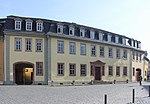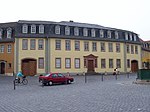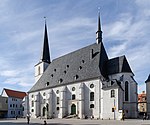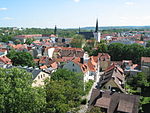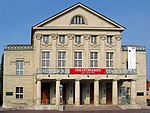Classical Weimar (World Heritage Site)

Classical Weimar (German: Klassisches Weimar) is a UNESCO World Heritage Site consisting of 11 sites located in and around the city of Weimar, Germany. The site was inscribed on 2 December 1998. The properties all bear testimony to the influence of Weimar as a cultural centre of the Enlightenment during the eighteenth and early nineteenth centuries. A number of notable writers and philosophers lived in Weimar between 1772 and 1805, including Johann Wolfgang von Goethe, Johann Gottfried Herder, Friedrich Schiller, and Christoph Martin Wieland. These figures ushered in and participated in the Weimar Classicism movement, and the architecture of the sites across the city reflects the rapid cultural development of the Classical Weimar era.
Excerpt from the Wikipedia article Classical Weimar (World Heritage Site) (License: CC BY-SA 3.0, Authors, Images).Classical Weimar (World Heritage Site)
Frauenplan,
Geographical coordinates (GPS) Address Phone number Website Nearby Places Show on map
Geographical coordinates (GPS)
| Latitude | Longitude |
|---|---|
| N 50.9775 ° | E 11.328611111111 ° |
Address
Goethe-Nationalmuseum (Goethes Wohnhaus)
Frauenplan 1
99423 , Altstadt
Thuringia, Germany
Open on Google Maps
